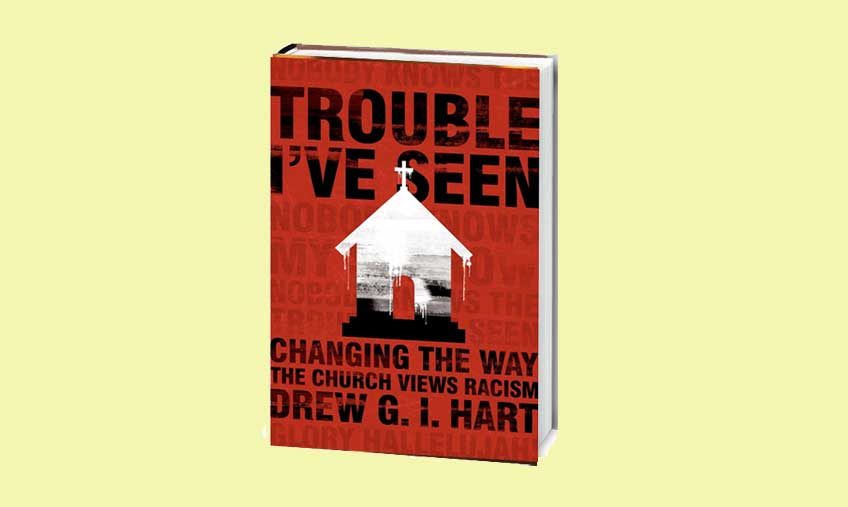It would be understandable to think that a book with a chapter titled #BlackLivesMatter is a trendy release timed to take advantage of racialized events that have been in the news. However, these events are part of a longer pattern, as evidenced by a list dating back to 1981 in the opening chapter of Trouble I’ve Seen: Changing the Way the Church Views Racism.
Drew Hart is not writing about race because it is the “cool” thing right now. He has been thinking and preaching about a Christian response to race, racism, and intercultural ministries for more than a decade, and his personal experiences go back to when he was bused to elementary school in a predominantly white neighborhood.
To be an American and a Christian can feel like the normal, natural state of things. Yet in my work with intercultural ministries, I am witness to a discomfort and discontent about the status quo of church in general and of our denomination in particular. I see that many of us believe church should be a place where people of all cultures feel welcome, but find ourselves attending monocultural worship services. We sincerely long for the church to reflect the Revelation 7:9 vision of people from all nations, tribes, and languages, but we do not know how to get there.
This is not a recent phenomenon: In 1960, on Meet the Press, Martin Luther King Jr. acknowledged that his congregation did not have any white members, and said that “one of the most shameful tragedies of America is that 11 o’clock on Sunday morning is America’s most segregated hour.”
Hart does not see this segregation as “normal.” He challenges us to think about how we Christians came to accept our segregated churches and why they persist. Sharing from his personal story and our national narrative, Hart methodically connects the dots between the past and the present. He names the uneasy alliance between international exploration and evangelism that claimed to be seeking “gold, God, and glory,” and between empire and emancipation that claimed to be a nation “of the people, by the people, for the people” while legalizing slavery. By admitting that Christianity and America have been interwoven in complicated ways that pull together as sharply as they push apart, Hart is able to relate to Christians who want to do outreach in the wider, multicultural context and yet struggle to make genuine connections.
What makes Hart’s analysis particularly relevant to Brethren is that, like us, he is rooted in the Anabaptist tradition, which has long claimed a calling to follow Christ as the servant leader. It is from this perspective that he can identify how we have allowed ourselves to become “Western first, Christian second” and ask how our churches would be different if we were Christian first.
It is an uncomfortable question with uncomfortable answers, but I am able to hear this because Hart’s book speaks hard truths with a thoughtful, compassionate heart.
About the BOOK
Title: Trouble I’ve Seen: Changing the Way the Church Views Racism. Author: Drew G.I. Hart. Publisher: Herald Press, 2016. Available from Brethren Press. Drew Hart spoke at the 2015 Intercultural Gathering co-hosted by Atlantic Northeast District and Harrisburg (Pa.) First Church of the Brethren. He was also recently interviewed by Dunker Punks, a youth movement in the Church of the Brethren (Episode 2, Name Game).
Gimbiya Kettering is director of intercultural ministries for the Church of the Brethren.


